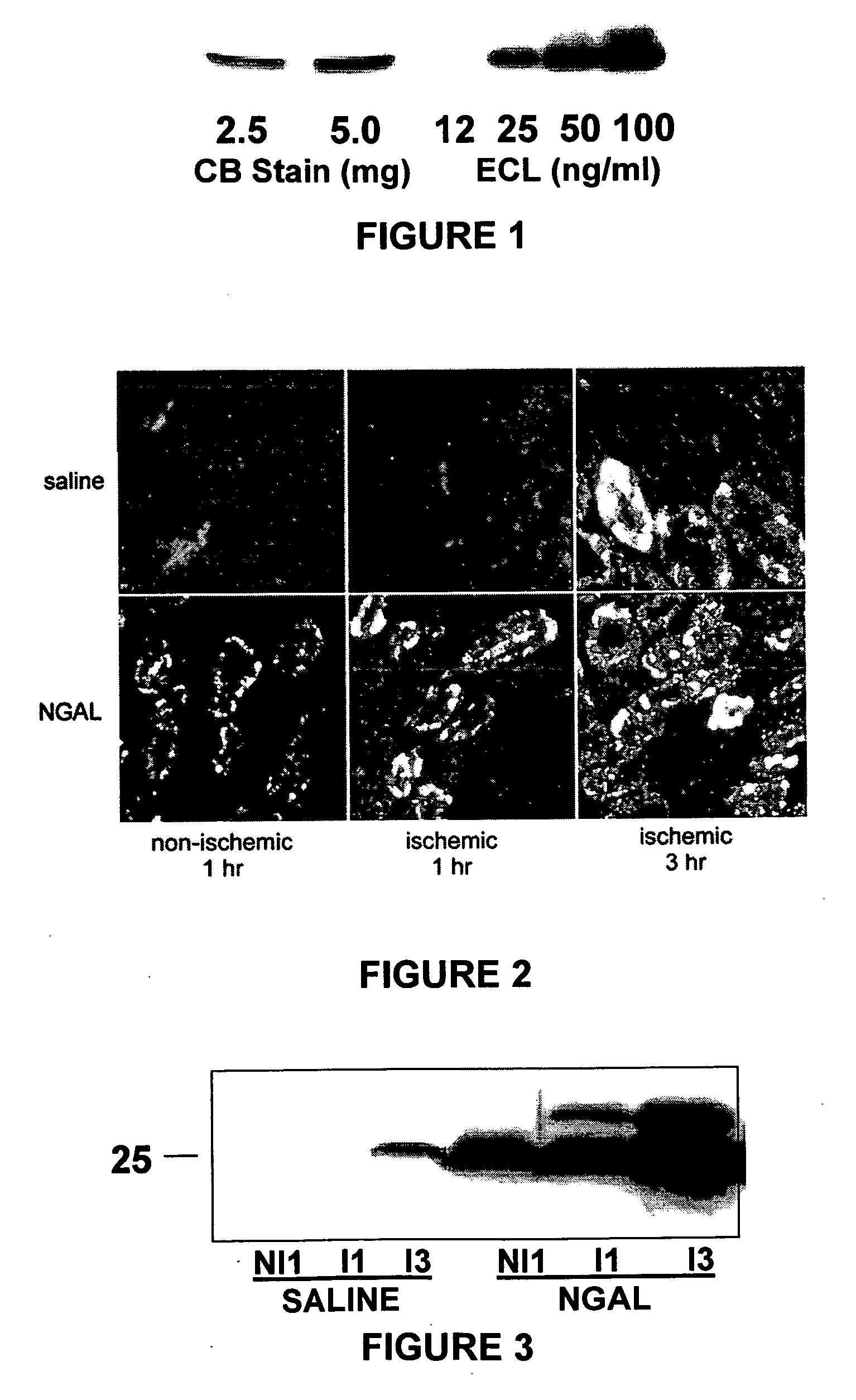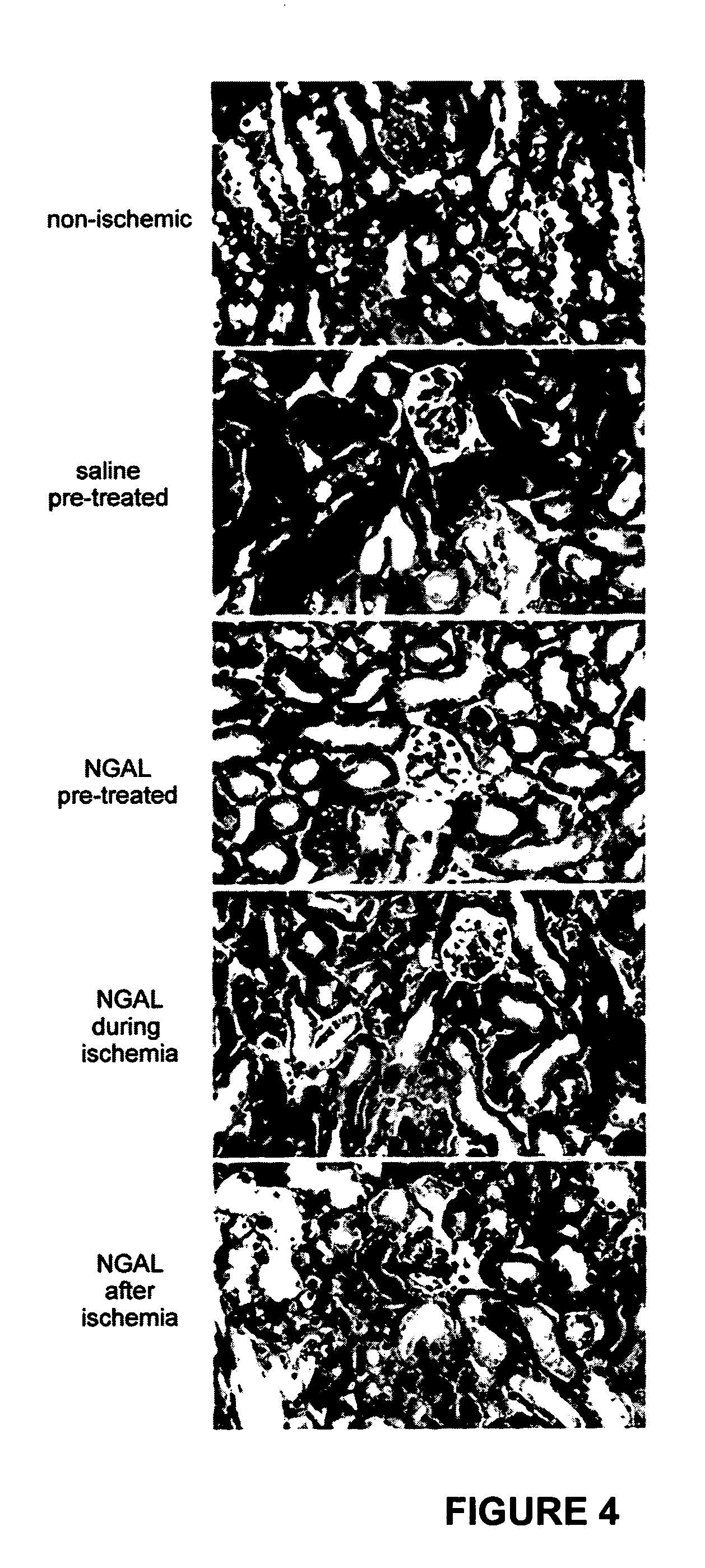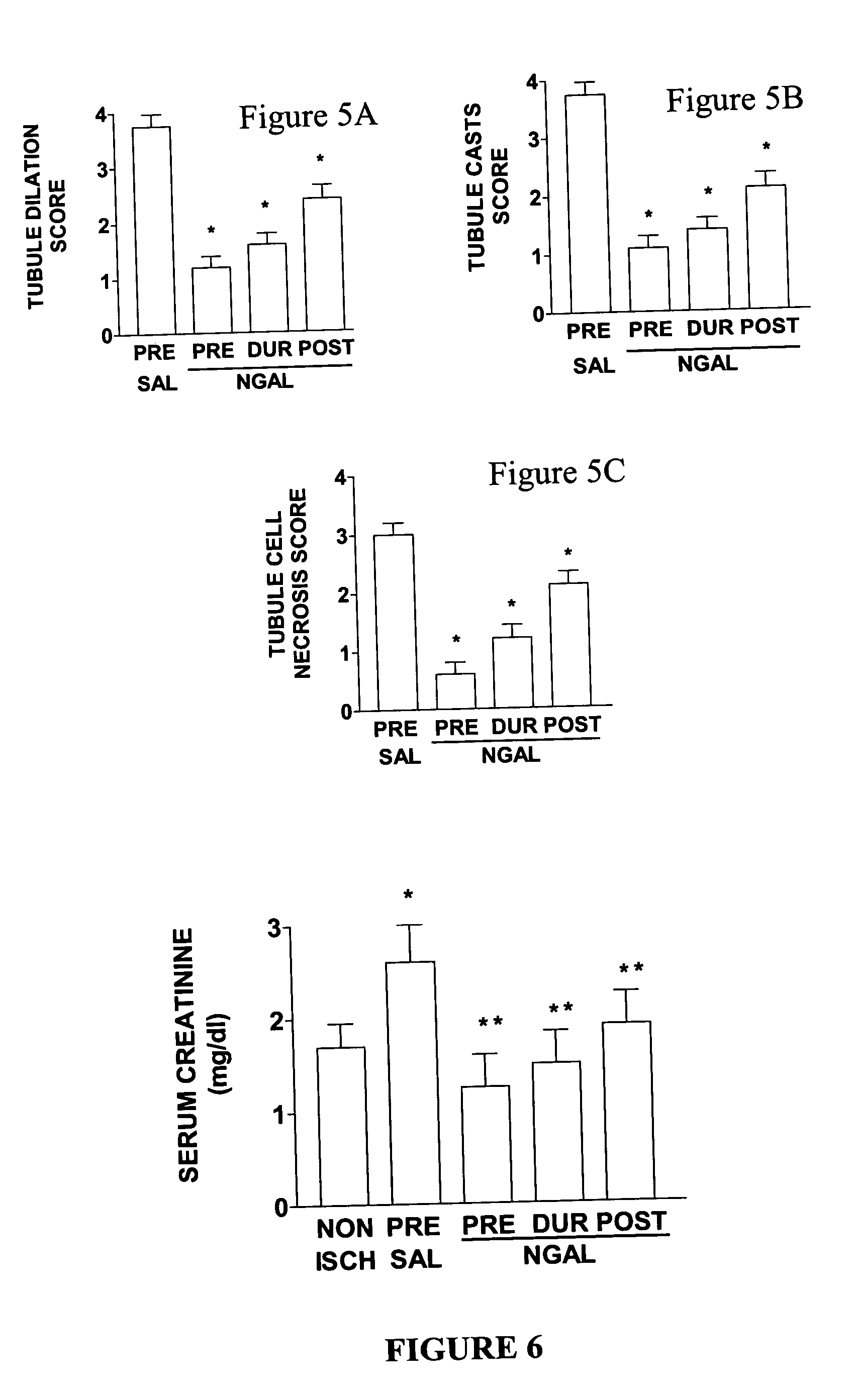NGAL for reduction and amelioration of ischemic and nephrotoxic injuries
- Summary
- Abstract
- Description
- Claims
- Application Information
AI Technical Summary
Benefits of technology
Problems solved by technology
Method used
Image
Examples
example 1
[0165] Intravenous NGAL is rapidly taken up by proximal tubule cells in vivo. Purified NGAL was delivered to its putative site of action, namely the proximal tubule. Mice received intravenous NGAL (250 μg in 100 μl saline) or an equal volume of saline alone, subjected to ischemia-reperfusion injury, and the kidneys and urine examined at various time periods, as shown in FIG. 2. Non-ischemic saline control animals had no NGAL (upper left panel), while non-ischemic NGAL-treated animals had NGAL (lower left panel). Saline-injected animals were devoid of kidney NGAL at one hour (upper center panel). Endogenous NGAL was detected in saline-treated animals at 3 hours after ischemic-reperfusion injury (upper right panel). In contrast, within one hour of NGAL injection, it was easily detected in a punctate cytoplasmic distribution predominantly in the proximal tubules (lower center panel), and was still seen at 3 hours (lower right panel). Identification of proximal tubules in these sections...
example 2
[0166] Intravenous NGAL rapidly appears in the urine following administration and ischemic-reperfusion injury. Urine from the animals of Example 1 was examined at various time periods. Saline-injected animals were devoid of kidney or urinary NGAL at the 1 hour reflow period, and NGAL was just detectable at the 3-hour reflow period, as shown in FIG. 3 (left panel). The 3 hour data represents the endogenous response of kidney tubule cells to ischemic injury. In contrast, in animals injected with NGAL and simultaneously subjected to ischemia-reperfusion injury, NGAL was easily detected in the kidney and urine with 1 hour of reflow, as shown in FIG. 3 (right panel).
example 3
[0167] NGAL ameliorates the histopathologic damage to tubules induced by ischemia-reperfusion injury. NGAL administered one hour before, during, or even one hour after ischemia resulted in a significant decrease in the histopathologic damage to tubules. Representative kidney sections obtained at 24 hours of reflow and stained with hematoxylin-eosin are shown in FIG. 4. While the non-ischemic controls (Non-Ischemic panel) displayed normal histology, animals pre-treated with saline alone (Saline Pre-treated panel) (100 μl, volume of diluent) displayed extensive features of acute tubular necrosis, including tubular dilatation, tubular cast formation, and necrotic cells. In contrast, NGAL-treated kidneys displayed an attenuated histopathologic response. This was most evident in animals pre-treated with NGAL (NGAL Pre-treated panel), but was also evident when the NGAL was administered during (NGAL During Isch panel) or even one hour after (NGAL After Isch panel) the ischemic injury. In o...
PUM
| Property | Measurement | Unit |
|---|---|---|
| Mass | aaaaa | aaaaa |
| Volume | aaaaa | aaaaa |
Abstract
Description
Claims
Application Information
 Login to View More
Login to View More - R&D
- Intellectual Property
- Life Sciences
- Materials
- Tech Scout
- Unparalleled Data Quality
- Higher Quality Content
- 60% Fewer Hallucinations
Browse by: Latest US Patents, China's latest patents, Technical Efficacy Thesaurus, Application Domain, Technology Topic, Popular Technical Reports.
© 2025 PatSnap. All rights reserved.Legal|Privacy policy|Modern Slavery Act Transparency Statement|Sitemap|About US| Contact US: help@patsnap.com



